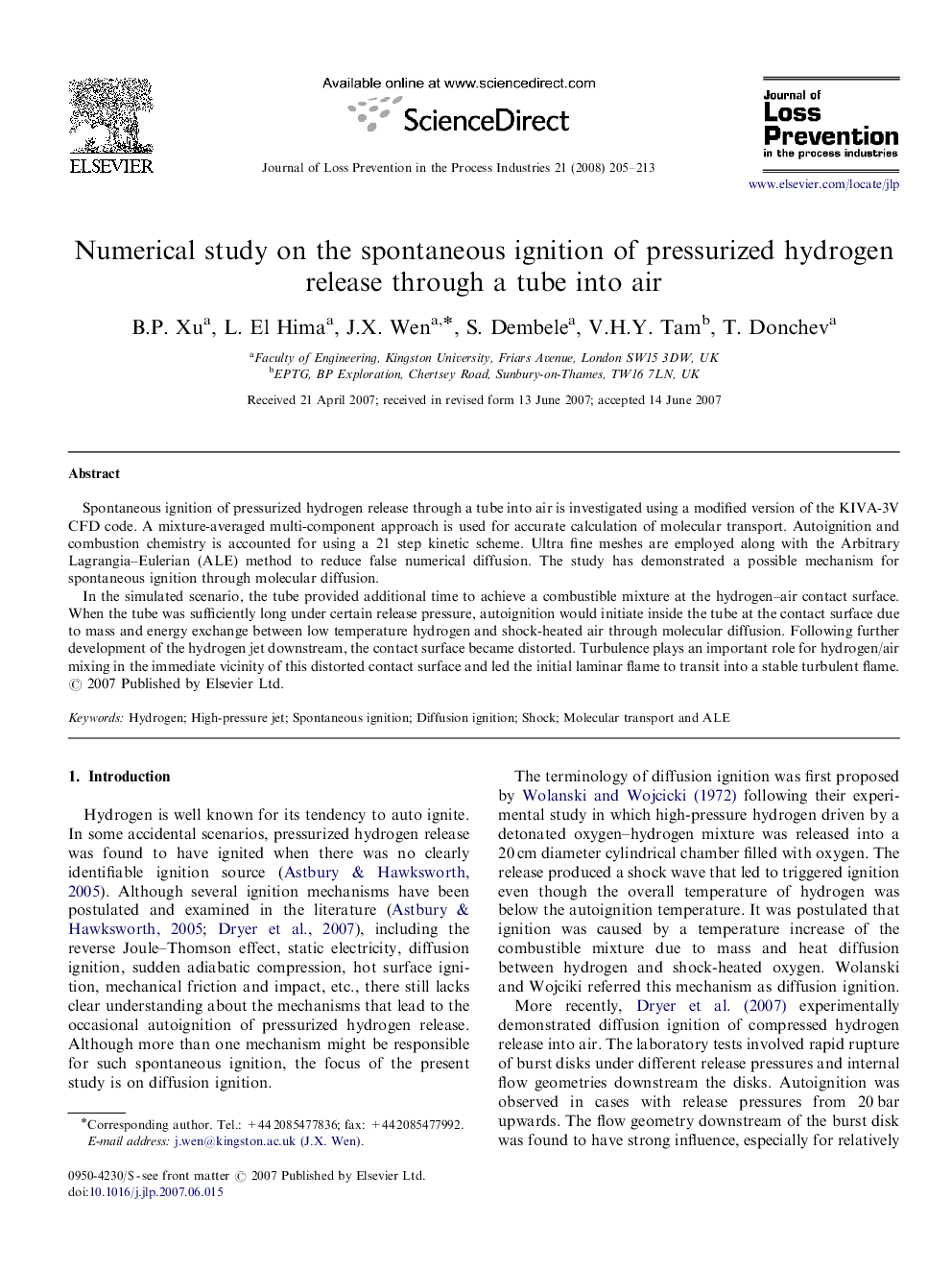| Article ID | Journal | Published Year | Pages | File Type |
|---|---|---|---|---|
| 587040 | Journal of Loss Prevention in the Process Industries | 2008 | 9 Pages |
Spontaneous ignition of pressurized hydrogen release through a tube into air is investigated using a modified version of the KIVA-3V CFD code. A mixture-averaged multi-component approach is used for accurate calculation of molecular transport. Autoignition and combustion chemistry is accounted for using a 21 step kinetic scheme. Ultra fine meshes are employed along with the Arbitrary Lagrangia–Eulerian (ALE) method to reduce false numerical diffusion. The study has demonstrated a possible mechanism for spontaneous ignition through molecular diffusion.In the simulated scenario, the tube provided additional time to achieve a combustible mixture at the hydrogen–air contact surface. When the tube was sufficiently long under certain release pressure, autoignition would initiate inside the tube at the contact surface due to mass and energy exchange between low temperature hydrogen and shock-heated air through molecular diffusion. Following further development of the hydrogen jet downstream, the contact surface became distorted. Turbulence plays an important role for hydrogen/air mixing in the immediate vicinity of this distorted contact surface and led the initial laminar flame to transit into a stable turbulent flame.
